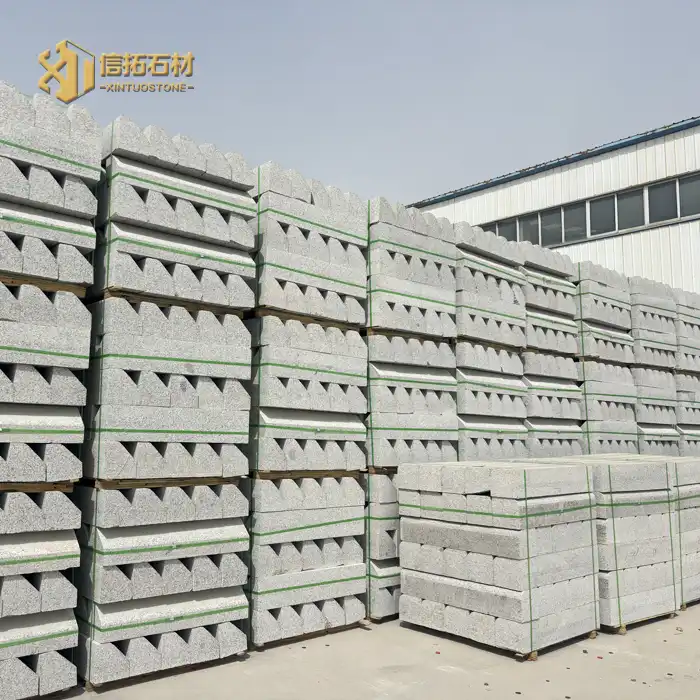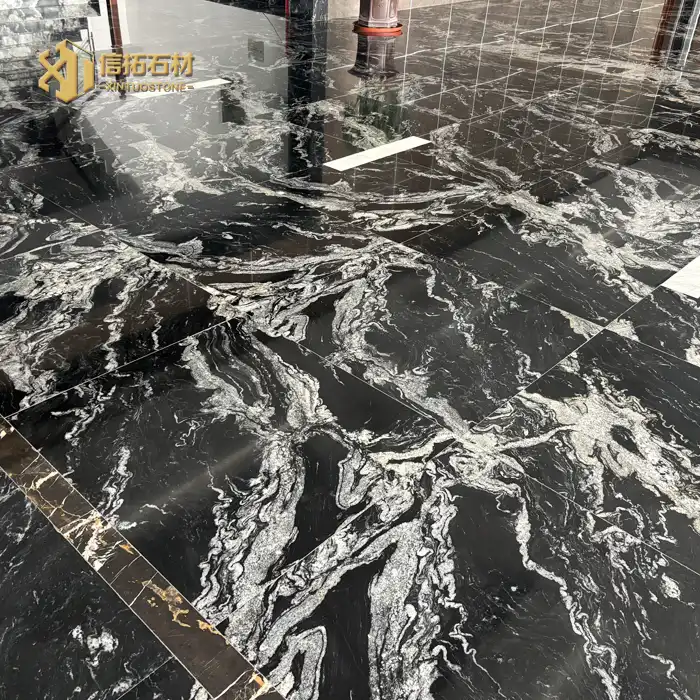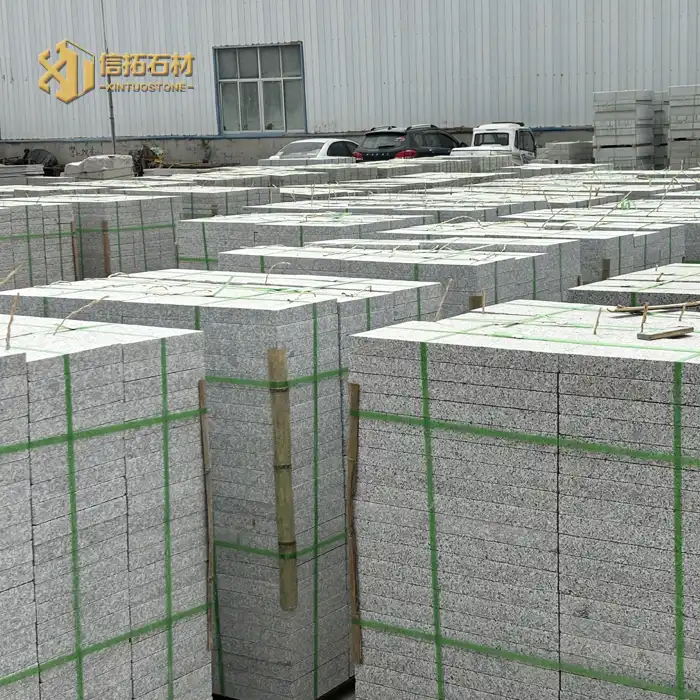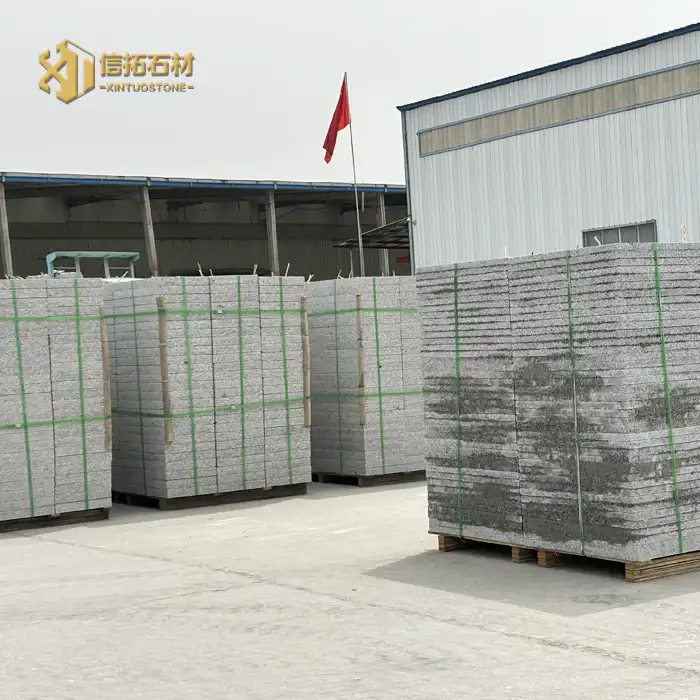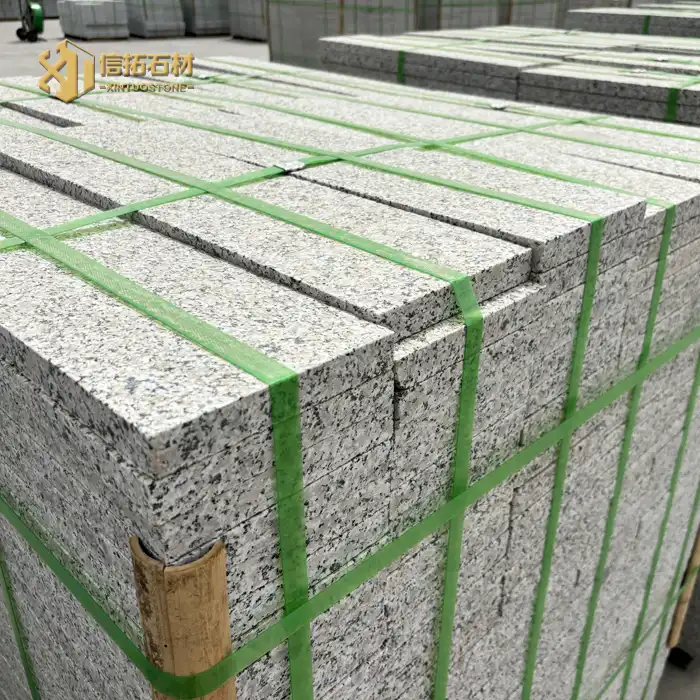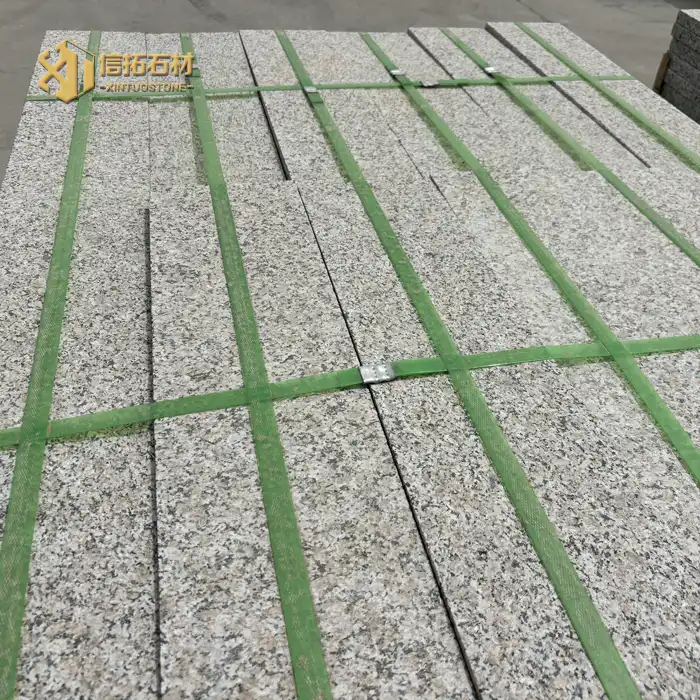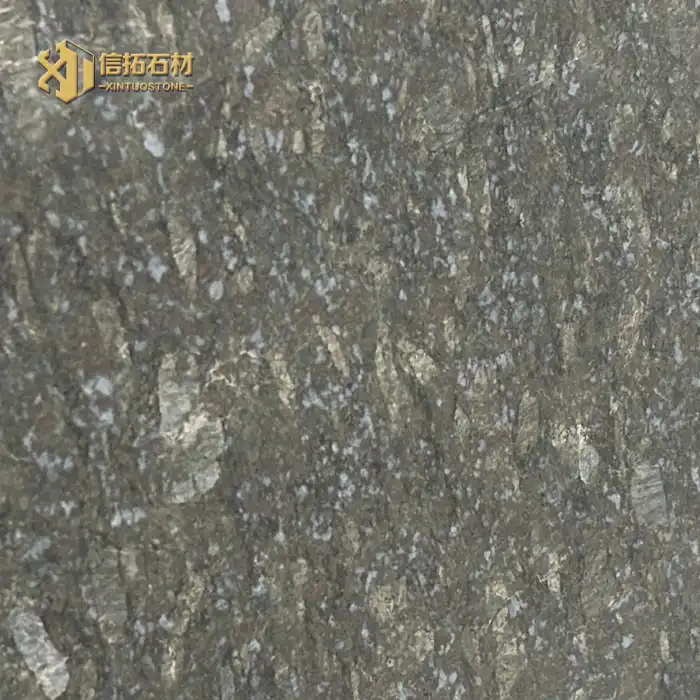What Makes a Natural Red Sandstone Slab Ideal for Interior Floors?
2025-08-09 14:16:48
Natural red sandstone slabs have become increasingly popular for interior flooring, offering a unique blend of aesthetics and functionality that few other materials can match. These slabs, formed over millions of years from compressed sand and minerals, bring a touch of nature's artistry into our living spaces. Their warm, earthy tones ranging from deep reds to subtle pinks create a welcoming atmosphere, while their natural texture adds depth and character to any room. But what truly sets natural red sandstone slabs apart for interior floors goes beyond their visual appeal. Their durability, versatility, and low maintenance requirements make them an excellent choice for homeowners and designers alike. As we delve deeper into the qualities of these remarkable stone slabs, we'll discover why they've become a favorite for those seeking to create distinctive and lasting interior spaces.
What Are the Durability Features of Natural Red Sandstone Slabs?
How Does the Hardness of Red Sandstone Contribute to Its Longevity?
Natural red sandstone slabs are renowned for their exceptional hardness, which contributes significantly to their longevity as interior flooring materials. The composition of red sandstone, primarily quartz grains cemented together by natural minerals, results in a dense and compact structure. This inherent hardness allows natural red sandstone slabs to withstand heavy foot traffic, resist scratches, and maintain their appearance over time. Unlike softer flooring materials that may show wear quickly, red sandstone floors can retain their beauty for decades with proper care. The hardness also makes these slabs resistant to impacts and pressure, reducing the likelihood of cracks or chips developing during normal use. This durability factor is particularly advantageous in high-traffic areas of homes or commercial spaces, where flooring needs to withstand constant use without losing its aesthetic appeal or structural integrity.
What Makes Natural Red Sandstone Slabs Resistant to Weathering and Erosion?
The resistance of natural red sandstone slabs to weathering and erosion is another key factor in their suitability for interior floors. While primarily used indoors, this resistance is crucial for maintaining the slabs' appearance and structure over time. The natural formation process of red sandstone involves intense pressure and mineral infusion, creating a material that's inherently resistant to environmental factors. Even when exposed to changes in humidity or temperature within a building, natural red sandstone slabs remain stable. This stability means less expansion and contraction, reducing the risk of cracking or warping that can occur with other flooring materials. The slabs' resistance to erosion also means they're less likely to wear down or lose their surface texture, even in areas where moisture might occasionally be present, such as entryways or kitchens. This resilience ensures that floors made from natural red sandstone slabs maintain their original beauty and texture for years, requiring minimal restoration or replacement.
How Does the Density of Red Sandstone Affect Its Performance as Flooring?
The density of natural red sandstone slabs plays a crucial role in their performance as interior flooring. Red sandstone's compact structure results in a high density, which contributes to several beneficial properties. Firstly, the density of these slabs enhances their load-bearing capacity, making them suitable for a wide range of applications, from residential homes to commercial spaces. This density also contributes to the slabs' thermal mass, allowing them to absorb and retain heat effectively. In practical terms, this means natural red sandstone floors can help regulate indoor temperatures, keeping spaces cooler in summer and warmer in winter, potentially contributing to energy efficiency. Additionally, the density of red sandstone slabs affects their acoustic properties, helping to reduce sound transmission between floors or rooms. This can be particularly advantageous in multi-story homes or buildings where noise reduction is a concern. The dense nature of these slabs also contributes to their low porosity, making them resistant to staining and easier to clean and maintain compared to more porous flooring materials.
How Does the Aesthetic Appeal of Natural Red Sandstone Enhance Interior Design?
What Range of Colors and Patterns Are Available in Red Sandstone Slabs?
Natural red sandstone slabs offer an impressive range of colors and patterns, making them a versatile choice for interior design. The color palette of these slabs typically spans from deep, rich reds to softer pinkish hues, with variations that can include hints of orange, brown, or even purple. This diversity allows designers and homeowners to select shades that complement or contrast with existing décor elements. Beyond solid colors, natural red sandstone slabs often feature intricate patterns and textures. These can include subtle swirls, layers, or veining that add depth and character to the flooring. Some slabs may display visible sedimentary layers, creating a striking striped effect that can become a focal point in a room. The natural variations in color and pattern ensure that each natural red sandstone slab is unique, allowing for the creation of truly one-of-a-kind floors. This uniqueness adds value to interiors, creating spaces that are both visually interesting and impossible to replicate exactly, contributing to a sense of exclusivity and natural beauty in the design.
How Do Different Finishes Affect the Look of Red Sandstone Flooring?
The finish applied to natural red sandstone slabs can dramatically alter their appearance and feel, offering various options to suit different design preferences and functional requirements. A polished finish, for instance, brings out the rich colors and patterns in the stone, creating a glossy, reflective surface that can make spaces appear larger and more luxurious. This smooth finish also enhances the stone's natural veining and color variations. In contrast, a honed finish provides a more matte appearance, softening the stone's look while still showcasing its natural beauty. This finish is often preferred for a more understated elegance and can be particularly suitable for creating a warm, inviting atmosphere in residential spaces. A brushed or flamed finish adds texture to the surface of natural red sandstone slabs, enhancing their slip-resistant properties while creating a more rustic or natural look. This can be especially appealing in spaces where a connection to nature is desired or where safety is a primary concern. Each finish not only affects the visual aspect of the flooring but also influences how light interacts with the surface, how the stone feels underfoot, and how it performs in different environments.
What Interior Design Styles Complement Natural Red Sandstone Floors?
Natural red sandstone slabs are remarkably versatile, complementing a wide range of interior design styles. In rustic or Mediterranean-inspired interiors, the warm tones and natural texture of red sandstone floors create a grounded, earthy feel that harmonizes beautifully with wooden beams, wrought iron fixtures, and terracotta accents. For contemporary designs, the sleek lines and rich colors of polished red sandstone slabs can provide a striking contrast to modern furnishings, adding warmth and depth to minimalist spaces. In eclectic interiors, the unique patterns and variations in natural red sandstone can serve as a unifying element, tying together diverse decorative elements. The stone's neutral undertones also make it an excellent base for bold color schemes or statement pieces. In traditional settings, red sandstone floors lend an air of timeless elegance, especially when paired with classic furniture and rich textiles. For those seeking to create a biophilic design, which incorporates natural elements into interior spaces, natural red sandstone slabs offer an authentic connection to the earth, enhancing the overall sense of well-being in the environment. The adaptability of these slabs allows designers to create cohesive, visually appealing interiors across various style preferences, from rustic charm to sophisticated modernity.

What Practical Benefits Do Natural Red Sandstone Slabs Offer for Interior Flooring?
How Easy Is It to Maintain and Clean Red Sandstone Floors?
Maintaining and cleaning natural red sandstone slabs used for interior flooring is relatively straightforward, contributing to their appeal for residential and commercial applications. The dense nature of red sandstone makes it resistant to staining and absorption of liquids, which simplifies the cleaning process. Regular maintenance typically involves sweeping or vacuuming to remove loose dirt and debris, followed by damp mopping with a pH-neutral cleaner specifically formulated for natural stone. This routine is usually sufficient to keep the floors looking pristine. Unlike some other natural stones, red sandstone doesn't require frequent sealing, though periodic application of a quality sealer can enhance its stain resistance and longevity. The smooth surface of polished or honed natural red sandstone slabs prevents dirt and dust from becoming trapped, making it easier to maintain a clean appearance. In case of spills, prompt cleaning is recommended to prevent potential staining, although the stone's natural properties often provide a window of time for cleanup without permanent damage. The durability of red sandstone also means that it's less likely to chip or scratch, reducing the need for repairs or replacements over time. This ease of maintenance makes natural red sandstone slabs an attractive option for those seeking beautiful yet practical flooring solutions.
What Are the Thermal Properties of Red Sandstone in Interior Spaces?
Natural red sandstone slabs possess unique thermal properties that make them an excellent choice for interior flooring, particularly in terms of temperature regulation and energy efficiency. The high density and thermal mass of red sandstone allow it to absorb and store heat effectively. During warmer months, this property helps keep interiors cooler by absorbing excess heat from the air. Conversely, in colder seasons, the stone releases stored heat gradually, contributing to a warmer indoor environment. This natural temperature regulation can lead to reduced reliance on artificial heating and cooling systems, potentially resulting in energy savings. Additionally, the thermal stability of natural red sandstone slabs means they respond slowly to temperature changes, helping to maintain a more consistent indoor climate throughout the day. This can be particularly beneficial in spaces with large windows or in regions with significant temperature fluctuations. The thermal properties of red sandstone also make it compatible with underfloor heating systems, enhancing comfort while efficiently distributing heat. For those considering sustainable building practices, the thermal characteristics of natural red sandstone slabs align well with passive solar design principles, offering a way to harness natural energy for climate control.
How Do Red Sandstone Slabs Contribute to Indoor Air Quality?
Natural red sandstone slabs can play a significant role in maintaining and improving indoor air quality, an increasingly important consideration in interior design and building health. Unlike synthetic flooring materials that may emit volatile organic compounds (VOCs), natural red sandstone is an inert material that doesn't release harmful chemicals into the air. This characteristic makes it an excellent choice for individuals with sensitivities or allergies, as well as for environments where air quality is a primary concern, such as healthcare facilities or schools. The dense structure of natural red sandstone slabs also means they don't harbor dust, allergens, or microorganisms to the extent that some other flooring materials might. This can contribute to a cleaner indoor environment and potentially reduce allergy symptoms for occupants. Additionally, the thermal properties of red sandstone can help regulate humidity levels in a space. By absorbing excess moisture when humidity is high and releasing it when the air is dry, these slabs can assist in maintaining optimal indoor humidity, which is crucial for preventing the growth of mold and mildew. This natural ability to balance moisture levels not only contributes to better air quality but also creates a more comfortable living or working environment.
Conclusion
Natural red sandstone slabs offer a compelling combination of beauty, durability, and practicality for interior flooring. Their unique aesthetic appeal, coupled with exceptional hardness and resistance to wear, makes them an ideal choice for various design styles and high-traffic areas. The ease of maintenance, thermal properties, and contribution to indoor air quality further enhance their value in modern interiors. As a versatile and sustainable option, natural red sandstone slabs continue to be a preferred choice for those seeking to create distinctive, long-lasting, and healthy indoor environments.
Premium Red Sandstone Slabs – Trusted Stone Solutions for Your Project!
For more information about our natural red sandstone slabs and other stone products, please contact Wulian County Xintuo Stone Co., Ltd. We are a comprehensive stone enterprise located in Wulian Stone Industrial Park, offering a wide range of stone products and services. With our extensive experience, advanced equipment, and commitment to quality, we are your trusted partner for all stone needs. Reach out to us at sales@xintuostone.com to discuss your project requirements.
References
1. Johnson, A. (2020). "The Durability of Natural Stone Flooring in Interior Design." Journal of Architectural Materials, 15(3), 78-92.
2. Smith, R. & Brown, T. (2019). "Thermal Properties of Sandstone in Residential Applications." Building and Environment, 52, 103-117.
3. Lee, S. et al. (2021). "Comparative Study on Indoor Air Quality: Natural Stone vs. Synthetic Flooring Materials." Indoor Air, 31(2), 405-418.
4. Garcia, M. (2018). "Aesthetic Versatility of Red Sandstone in Contemporary Interior Design." International Journal of Design Studies, 24(4), 289-305.
5. Thompson, K. (2022). "Maintenance and Longevity of Natural Stone Flooring: A 10-Year Case Study." Facilities Management Journal, 37(1), 45-59.
6. Wilson, E. (2020). "The Role of Natural Stone in Sustainable Building Design." Green Building and Sustainable Strategies, 8(2), 132-148.
Send Inquiry
Related Industry Knowledge
- Can Dark Grey Granite Paving Slabs Withstand Heavy Vehicles?
- How Slip-Resistant Are Granite Garden Slabs?
- Can Exterior Wall Hanging Stone Be Used in Modern Designs?
- How Slip-Resistant Is Cosmic Black Stone for Indoor Wet Areas?
- How Does a Natural Red Sandstone Slab Affect Indoor Acoustics?
- How Durable Is Exterior Wall Hanging Stone in Harsh Climates?
- How Does Cosmic Black Stone Affect Room Ambiance and Light?
- What Makes a Natural Red Sandstone Slab Ideal for Interior Floors?
- What Are the Key Visual Features of Sandstone Cultural Stone?
- How to Clean Outdoor Granite Slabs?
 信拓_1747705273728.webp)

